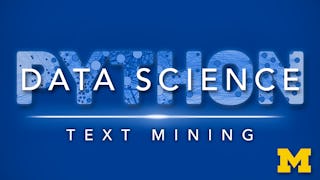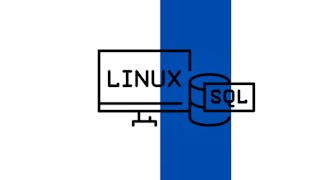Many fields, such as data science, bioinformatics, and Linux systems administration, require the manipulation of textual data. Tasks include extracting fields or records meeting certain conditions from structured data (e.g., comma-separated files), combining content from multiple files, applying systematic changes to all lines of a document, sorting or randomizing data, and splitting larger files into smaller files. While these operations could be done by hand, they tend to be time-consuming, tedious and, worst of all, error prone.



Expérience recommandée
Ce que vous apprendrez
Use of basic and advanced tools for searching and manipulating text in a Linux environment
Regular expressions in the context of awk, sed and grep
Compétences que vous acquerrez
- Catégorie : Unix
- Catégorie : Text Mining
- Catégorie : Command-Line Interface
- Catégorie : Unix Commands
- Catégorie : Linux Administration
- Catégorie : Linux
- Catégorie : Shell Script
- Catégorie : Data Manipulation
- Catégorie : File Management
- Catégorie : Data Processing
- Catégorie : Scripting
- Catégorie : Linux Commands
- Catégorie : Automation
Détails à connaître

Ajouter à votre profil LinkedIn
octobre 2025
12 devoirs
Découvrez comment les employés des entreprises prestigieuses maîtrisent des compétences recherchées

Il y a 7 modules dans ce cours
In this module, we start by providing some background on Linux tools, the prerequisites for the course, Linux flavors, the motivation for automating tedious and repetitive tasks, and accessing the GitHub repository. We also provide optional instructions for Mac users who wish to access the standard version of the tools that are distributed with Linux distros.
Inclus
2 vidéos5 lectures
In this module, we dive in and cover the simpler tools in roughly their order of increasing complexity: head, tail, wc, expand, tac, paste, nl, tr, sort, shuf, uniq, split and cut. Along the way, we discuss the similarities and differences between the tools, potential pitfalls, limitations and linking tools together to create simple workflows.
Inclus
9 vidéos1 lecture5 devoirs
This module explores three of the more powerful Linux text processing tools: grep, awk and sed. We start with using grep to find matches in a file. We then cover awk, which is actually a full programming language, but will limit our treatment to one-liners for extracting fields and records from a file. The module concludes with sed, a stream editor that can operate efficiently on arbitrarily large files.
Inclus
4 vidéos3 devoirs
This module introduces regular expressions and the key features such as character classes, quantifiers, groups, anchors, alternation and word boundaries. These features are all covered in the context of grep, but we'll see later that they carry over to awk and sed.
Inclus
6 vidéos1 devoir
This module continues our discussion or regular expressions, going into some of the more advanced features that are only available in Perl compatible regular expressions, such as lazy matching, lookahead, lookbehind and backreferences. We also show how regexes can be used with awk and sed.
Inclus
6 vidéos2 lectures2 devoirs
This is the last mandatory module of the course and includes the final exam and some closing remarks.
Inclus
1 vidéo1 lecture1 devoir
This module contains the lecture notes used during the production of the videos. This is not required reading and is provided for those who wish to supplement the videos or who find that they learn better from written materials. Unlike the transcripts, these PDFs contain the commands that were executed during the videos. Note that while the videos generally follow the lecture notes, there will not be an exact correspondence between the videos and notes.
Inclus
25 lectures
Instructeur

Offert par
En savoir plus sur Data Analysis
 Statut : Essai gratuit
Statut : Essai gratuitUniversity of Michigan
 Statut : Essai gratuit
Statut : Essai gratuitThe Linux Foundation
 Statut : Essai gratuit
Statut : Essai gratuit Statut : Essai gratuit
Statut : Essai gratuit
Pour quelles raisons les étudiants sur Coursera nous choisissent-ils pour leur carrière ?





Ouvrez de nouvelles portes avec Coursera Plus
Accès illimité à 10,000+ cours de niveau international, projets pratiques et programmes de certification prêts à l'emploi - tous inclus dans votre abonnement.
Faites progresser votre carrière avec un diplôme en ligne
Obtenez un diplôme auprès d’universités de renommée mondiale - 100 % en ligne
Rejoignez plus de 3 400 entreprises mondiales qui ont choisi Coursera pour les affaires
Améliorez les compétences de vos employés pour exceller dans l’économie numérique
Foire Aux Questions
To access the course materials, assignments and to earn a Certificate, you will need to purchase the Certificate experience when you enroll in a course. You can try a Free Trial instead, or apply for Financial Aid. The course may offer 'Full Course, No Certificate' instead. This option lets you see all course materials, submit required assessments, and get a final grade. This also means that you will not be able to purchase a Certificate experience.
When you purchase a Certificate you get access to all course materials, including graded assignments. Upon completing the course, your electronic Certificate will be added to your Accomplishments page - from there, you can print your Certificate or add it to your LinkedIn profile.
Yes. In select learning programs, you can apply for financial aid or a scholarship if you can’t afford the enrollment fee. If fin aid or scholarship is available for your learning program selection, you’ll find a link to apply on the description page.
Plus de questions
Aide financière disponible,


